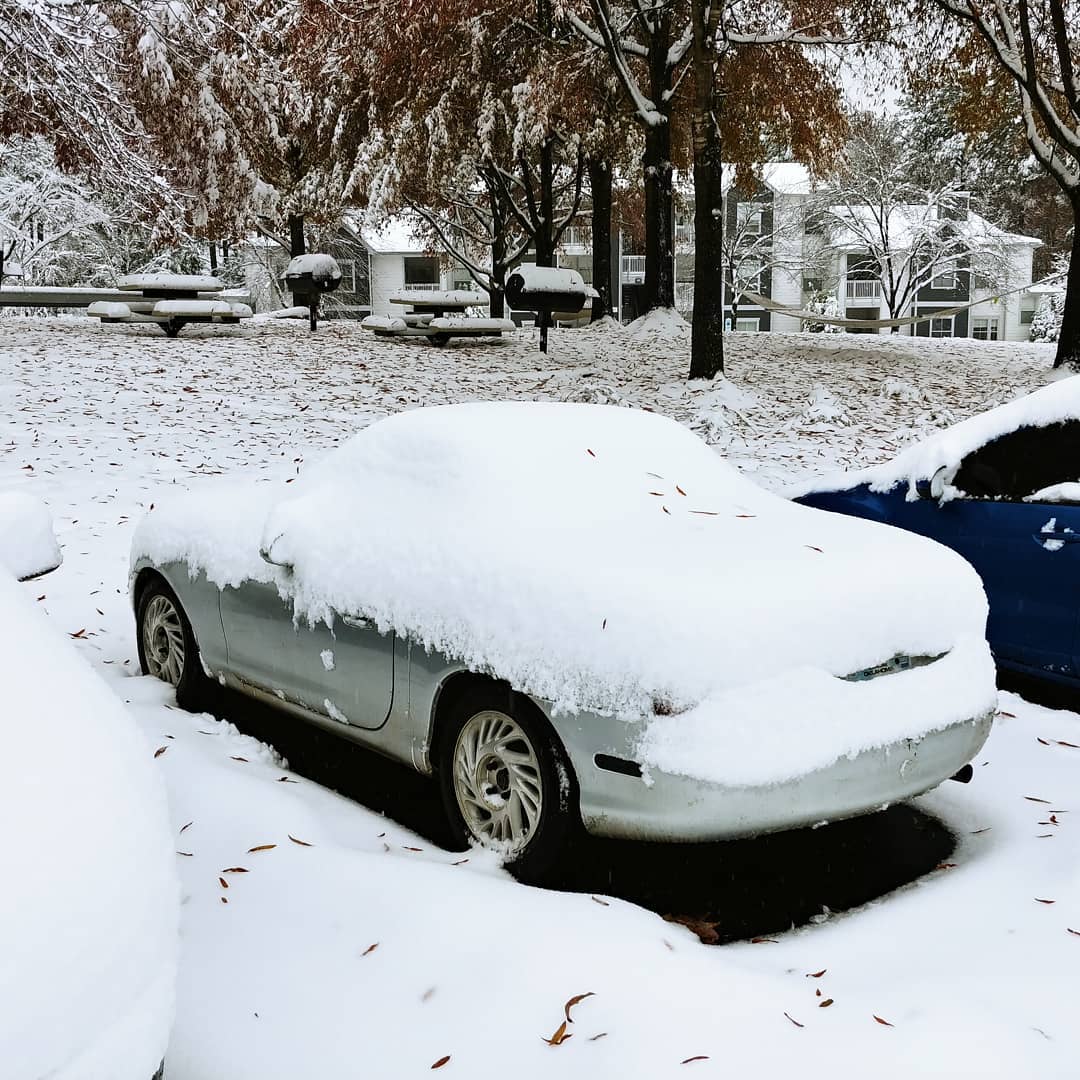It’s a cold winter morning, it’s 10 degrees outside, there’s some snow on the ground but not enough for school or work to close. You have an icy windshield to melt or scrape and you tell either yourself or surrounding family, “I’m going to go outside and warm up the car.”
Videos by Rare
You start the car, let it sit idling to get it to a good operating temperature in the driveway for a few minutes and then begin your day when you are satisfied with the temperature inside the vehicle. It makes sense, right? It can’t do any harm to let your car idle in cold weather, or can it?
Sorry to be the bearer of bad news, but this is not a good idea for your car or your wallet.
An informative article from Business Insider, which quoted a drag racer turned doctorate in mechanical engineering, attempted to put to rest what it called the “myth” that idling your car in the winter to warm it up is the right thing to do.
Here’s Popular Mechanics’ explanation:
In a nutshell, an internal combustion engine works by using pistons to compress a mixture of air and vaporized fuel within a cylinder. The compressed mixture is then ignited to create a combustion event—a little controlled explosion that powers the engine.
When your engine is cold, the gasoline is less likely to evaporate and create the correct ratio of air and vaporized fuel for combustion. Engines with electronic fuel injection have sensors that compensate for the cold by pumping more gasoline into the mixture. The engine continues to run rich in this way until it heats up to about 40 degrees Fahrenheit.
Stephen Ciatti said that idling the car like this is a problem because “you’re actually putting extra fuel into the combustion chamber to make it burn and some of it can get onto the cylinder walls.” He said that although “gas can actually wash the oil off the walls if you run it in those cold idle conditions” this has a “detrimental effect on the lubrication and life of things like piston rings and cylinder liners” over time. In essence, turning on the ignition with the intent to warm up a cold engine isn’t doing you any good.
Turning on the heat in your car doesn’t warm up your engine, it warms the inside of your car, so if you really want to warm up your engine you need to drive. And while nobody likes driving a cold car, the life of your engine will thank you for enduring a cold steering wheel for five minutes. Once you start driving the warm air will begin to circulate.
That’s not to say you should floor it once you’re on the road either, at least not for the first five to 15 minutes, because your car gas burns less efficiently when it’s a cold morning, and you’ll be wasting money. If you’re idling your car, you’re wasting gas and not helping your engine. If you’re driving your car too hard while it’s cold, you’re wasting gas.
https://www.instagram.com/p/BrgLFVhH3Xi/
So, where did this idea about warming up your car come from? A carburetor-run car pre-1980s. So of course, older cars.
“Before 1980, carburetors were the heart that kept car engines pumping. From the 1980s onward, however, electronic fuel injection took over and is still what powers today’s car engines,” Business Insider said. “The key difference is that electronic fuel injection comes with a sensor that feeds the cylinders the right air-fuel mixture to generate a combustion event. Carburetor-run cars lacked this important sensor.”
New car owners don’t have to worry about this with the days of carburetors long behind us. Just grab a pair of driving gloves if you really hate the cold.
Editors Note: This post was originally published on December 9, 2019.



